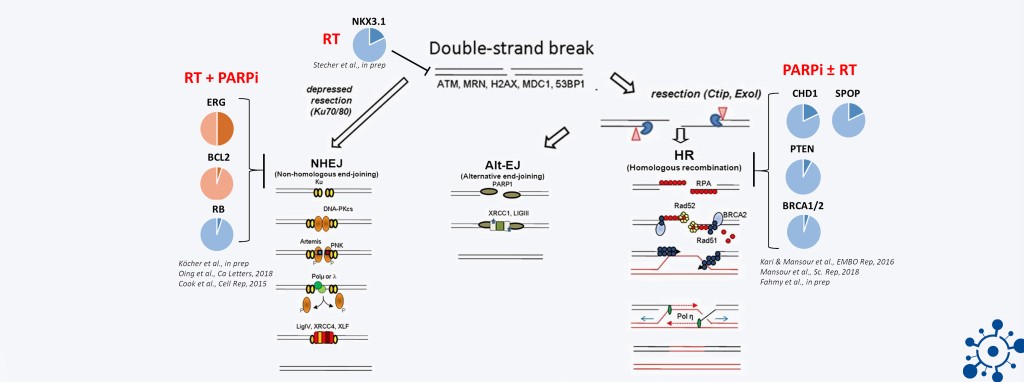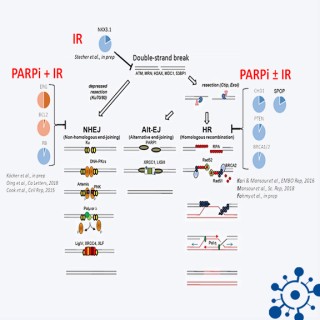P8 - Targeting DSB repair deficiency in prostate cancer
Wael Mansour
Laboratory for Radiobiology & Experimental Radiooncology, University Medical Center Hamburg-Eppendorf
Prostate cancer (PCa) is the most frequent cancer for men. Generally, PCa grows slowly and initially responds to androgen ablation therapy (androgen-dependent, AD). However, eventually some tumors become refractory to this therapy, and progress into androgen-independent prostate cancers (Hormone refractory, HRPC). PCa is believed to progress through accumulation of various DNA damage response (DDR) deficiencies and DNA double-strand break (DSB) repair defects that lead to gross chromosomal aberrations such as translocations and deletions. Work concept of the current project is based on the (i) identification and (ii) exploitation of such defects. This indeed will lead to better understanding of the molecular mechanism(s) of PCa progression and eventually identification of molecular biomarkers that can be used as predictors for the response of PCa to different treatment strategies. We have identified several PCa-specific alterations/mutations that correlate with a specific DSB repair deficiency that can be targeted. For example, overexpression of ERG (Köcher et al., in process) or BCL2 (Oing et al., 2019) inhibits NHEJ and switches the repair to alternative PARP1-dependent end joining (PARP1-EJ). This consequently enables tumor-specific radiosensitization using the PARP inhibitor olaparib. Other PCa-specific mutations such as (i) deletions encompassing either CHD1 (Kari & Mansour et al., EMBO Rep. 2018) or PTEN (Mansour et al., 2019), (ii) BRCA1/2- or (iii) SPOP-mutations cause a defect in the homologous recombination (HR) repair pathway, which – through synthetic lethality – can be specifically targeted by olaparib as a monotherapy or in combination with radiotherapy.
Grants: BMBF 02NUK032, BMBF 02NUK035, Hamburger Krebsgesellschaft, UCCH-research Fellowships, Spierling-Stiftung, DAAD-GERL
Contact: w.mansour@uke.de
-
Selected publications on topic
Loss of CHD1 causes DNA repair defects and enhances prostate cancer therapeutic responsiveness. Kari V, Mansour WY, Raul SK, Baumgart SJ, Mund A, Grade M, Sirma H, Simon R, Will H, Dobbelstein M, Dikomey E, Johnsen SA.EMBO Rep. 2018 Oct;19(10):e46783. doi: 10.15252/embr.201846783.PMID: 30291165
Involvement of ATM in homologous recombination after end resection and RAD51 nucleofilament formation .Bakr A, Oing C, Köcher S, Borgmann K, Dornreiter I, Petersen C, Dikomey E, Mansour WY.Nucleic Acids Res. 2015 Mar 31;43(6):3154-66. doi: 10.1093/nar/gkv160. Epub 2015 Mar 9.PMID: 25753674
The alternative end-joining pathway for repair of DNA double-strand breaks requires PARP1 but is not dependent upon microhomologies. Mansour WY, Rhein T, Dahm-Daphi J.Nucleic Acids Res. 2010 Oct;38(18):6065-77. doi: 10.1093/nar/gkq387. Epub 2010 May 18.PMID: 20483915



